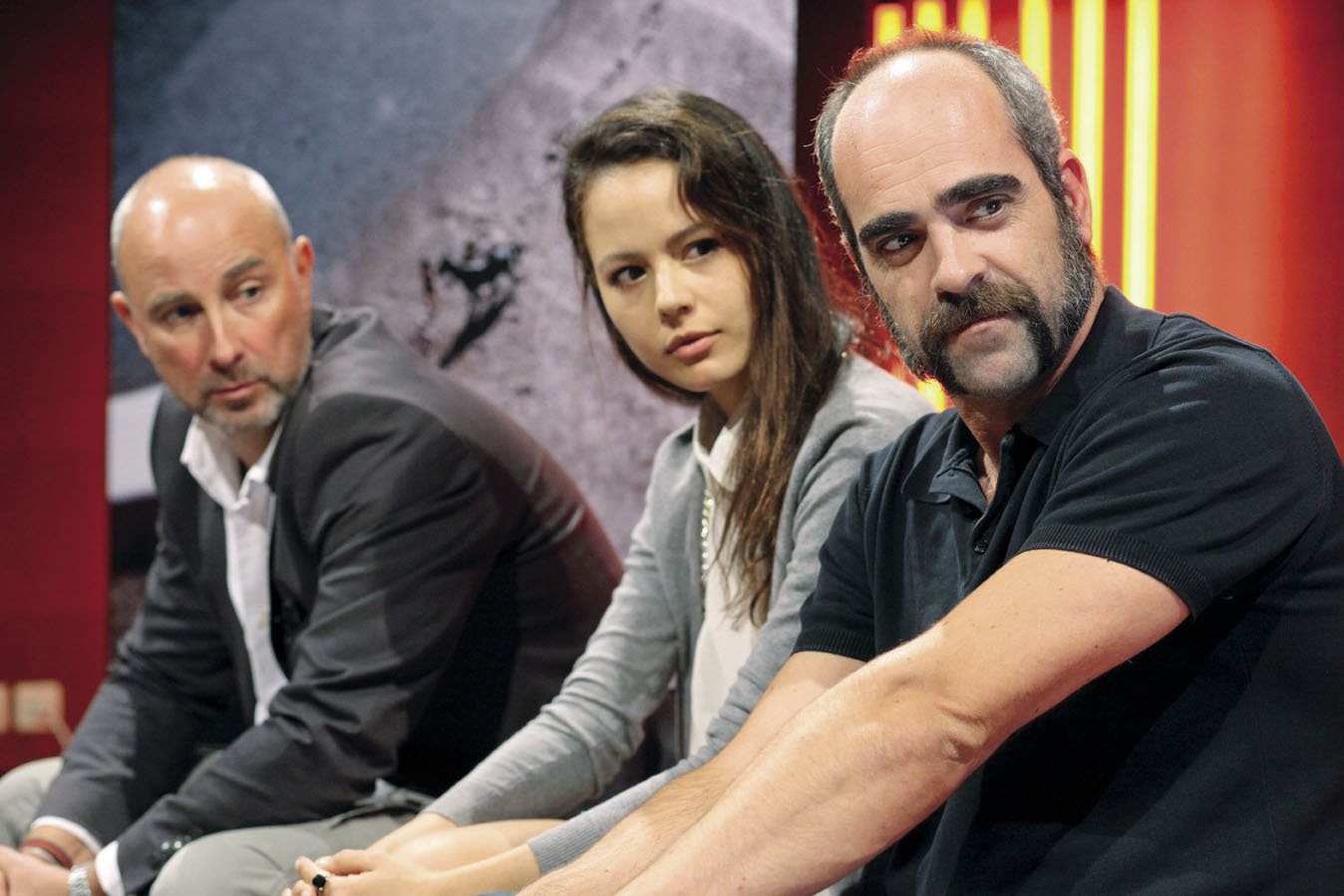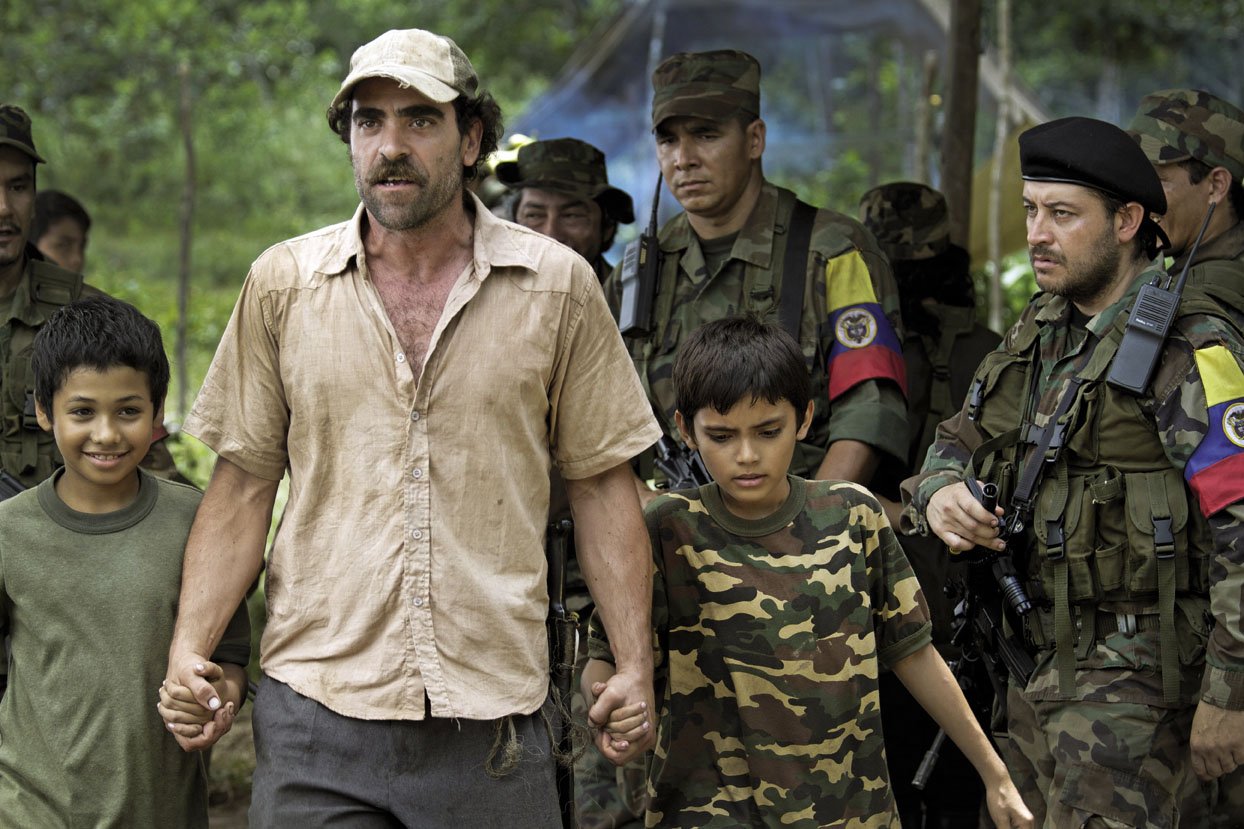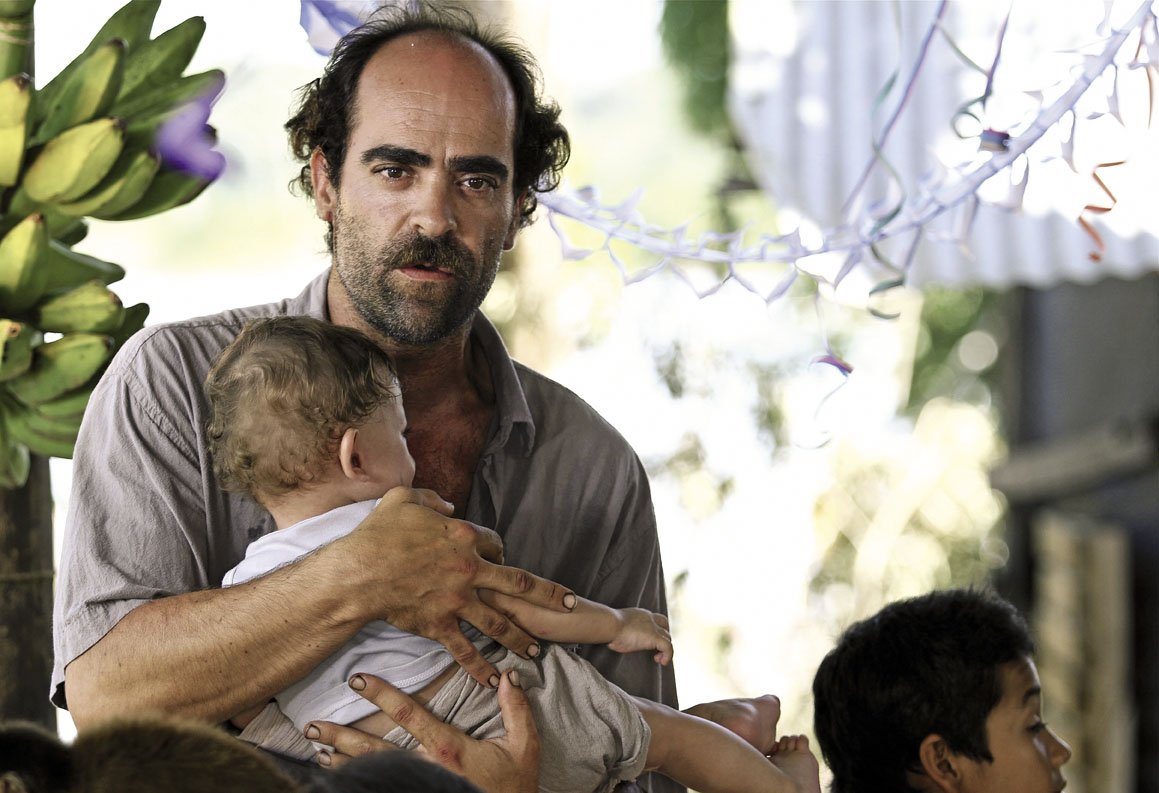
Luis Tosar: “In Colombia, Dayli Life is Exaggeratedly Real”
By. Iván Beltrán Castillo
Photos: Lisa Palomino
Luis Tosar, one of the most famous contemporary Iberian actors, is accustomed to visiting dark realities, dense universes, tragic worlds, and unbearable atmospheres, but he had to reach deep inside to understand the character he portrays in the film Operación E. This film tells the story of a recent, violent, and tragically real historical event. Making the film was, according to Tosar, about recreating the exceptional days, hostile landscapes, cruel stories, and unbelievable details of Colombia’s endless war.
Tosar grew closer to this character than any other he has played. It was a magical experience, an apparition, in the true sense of the word. Characters in movie scripts usually appear vague and fictional to Tosar, belonging to the world of fables. He never encountered a man so immersed in the pettiness, contradictions, and desperation of reality as the character he found in Operación E. He never encountered a man like this, living in constant turbulence, as if he were part of a movie without an end.
José Crisanto Gómez is part of one of the sectors of life in Colombia hit hardest by endless war. The Revolutionary Armed Forces of Colombia (FARC is the Spanish acronym), the oldest guerrilla group in Latin America, forced him to take care of Emmanuel, the son of former hostage Clara Rojas. The newborn baby arrived at his home in a deplorable state of health. Crisanto had no choice but to accept the FARC’s orders, but his good deeds ended up getting him entangled in a host of trouble. He was accused of kidnapping and spent four years in prison. Clara Rojas challenged his role in history, and his only defense was to write a book telling his side of the story, titled El hijo de la selva (The Son of the Jungle). “Why would I need to kidnap a child, when I already had seven of my own?” he asks today, stunned. His story definitely sounds like it could be a film, and his experiences changed his life forever.

He had many jobs (collector, merchant, retailer, and caretaker) and when the crisis reached its climax, he became another one of the hundreds of displaced people migrating to the cities. Always poorly paid, at one point he worked as a ”raspachín,” a laborer who collects and sells coca leaves or scrapes (raspar) them to produce a paste, becoming one of the workers and pawns in the international drug trade, out of hunger rather than ambition.
Luis Tosar discovered, shortly after reading the script written by Antonio Onetti, that he would meet José Crisanto Gómez face to face. He was anxious for many days, like a writer about to spend an evening getting to know one of his most beloved characters. Before the meeting, he meticulously studied the psyche, vocabulary, idioms, cruelty, profanity, and visual culture of the country people of Colombia. He relied on the advice of a Colombian doctor, who gave him intensive lessons for more than three months, and then plunged into studying the coordinates of the jungle’s rugged geography.
After much expectation, they finally met. Tosar was face to face with him. It was José Crisanto, the victim and scapegoat of the guerillas, the government, the media, the bureaucrats, and even shady lawyers, who spend their days looking for legal entanglements for their own gain. He is the hero of Operación E, a film by the Spanish director Miguel Courtois.

At first glance, no one would see any similarity between the two men united by glorious chance. Crisanto is haggard, coppery, and short; someone with a particularly vivid imagination might compare him to a statuette of a small pagan deity. In contrast, Tosar is a typical Galician man, in whose face beauty borders on the indecipherable, mysterious and temperamental.
They made fast friends. They walked together through the streets of Cartagena, Madrid, and Bogotá, and now each feels as if the other is his beloved double. Tosar thinks his art’s greatest gifts have been these encounters between daily life and the exceptional.
While they were in Bogotá, the two attracted attention because they were never apart. They did all the interviews, social events, and even breakfasts and lunches together. According to Tosar, he and “his ghost” share a sense of humor not devoid of cruelty but one that both gently soften.
“Walking through Bogotá with José Crisanto,” recalls Luis Tosar, “I remembered my awards, my distinctions, and the glory of fame. But none of these things seemed important. Art is justified and nourished by a sensitive conscience that illuminates the world like a fire in the middle of the most unpleasant place. And of course, the possibility of one day sitting down to breakfast with your favorite ghost, meeting the real life incarnation of a beloved character.”

“There are things in my past experiences in Spain that give me particular insight into the turbulent histories in this part of the world. I turned to those memories in constructing this fascinating character. I had a lot of information about Latin America, especially Colombia, in my files, because I’ve already played a Colombian. It was on Miami Vice, where I played a Colombian drug lord, as have so many other actors with alarming frequency.”
Tosar’s extensive film and theatrical background, which includes numerous stage productions of Shakespeare, Bertolt Brecht, and Tennessee Williams, and lead roles in more than fifty films, and his awareness of the social, ideological, and political problems of his time, were vital for meeting the challenges he faced in this role. “In Europe, the Colombian reality is understood differently,” Tosar stated, recalling a recent film screening. “It’s like a distant whisper we hear, but with a precious message we don’t really understand because it arrives incomplete. The days the men and women live in these difficult places are like fragments, lost in space and time, far from the developed, fortunate, proud world of the big cities. I learned that life is harder and more cruelly real in this part of the world.”
“We filmed in Puerto López and other towns in the department of Meta, which are tyrannized by a code of silence that has become normalized. The conflict is present, but it is almost impossible to get anybody to talk about it. You have to trace the truth in the air, capture it with your powers of observation, intuit it in the impressive rhythm of the earth, in suspicious looks, and the footprints in the sky, at times heavy, as if announcing a storm, and at times radiant, celestial, blinding, almost speaking.”

Sensitive, like Galicia
Luis Tosar‘s Spain is not one of bullfights and snaking flamenco, powerful industrialists and bankers, nor the proud, imposing bishops in Renaissance portraits, much less the Spain shown coquettishly on postcards. It is “the other,” the one which remains unnamed. The one that has yet to become completely separate from its feudal past; on more than one occasion it has cursed its dependence on Madrid. A Spain, in short, no less eccentric or isolated than Colombia or Bolivia, two countries very dear to the actor: the first for Operación E, and the second because it is the location of his other Latin American experience, filming También la lluvia (Even the Rain). This film lyrically portrays the indigenous movement that challenged a multinational company intending to privatize the water in Cochabamba.
“I am Galician, and this tells you much more than if I just say I am Spanish,” comments Tosar. “Galicia is a sensitive region, melancholy, dissatisfied, often forgotten. A rainy region with large herds of cattle and enormous fields, where the harvesters have brooding, weathered countenances. There have been many independence movements there, featuring great fighters for the preservation of our language (our beloved Gallego), and avant-garde artists who attempt to reveal the identity and soul of the region in new ways. So, although the Latin American reality may seem distant and inaccessible to the residents of the old continent, there exists a secret closeness, a kinship, and a spiritual connection.”



